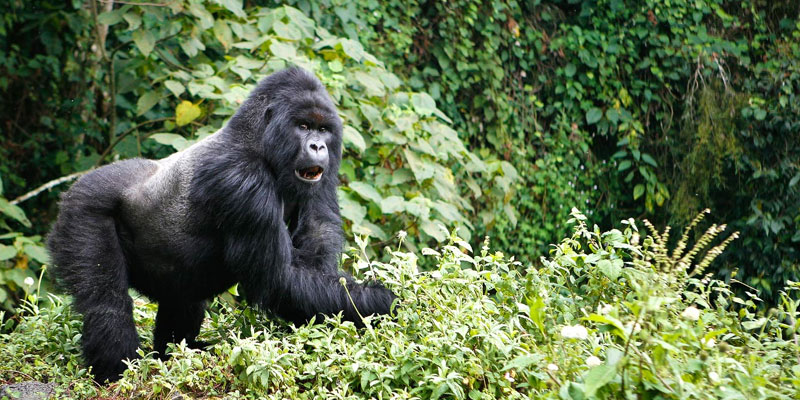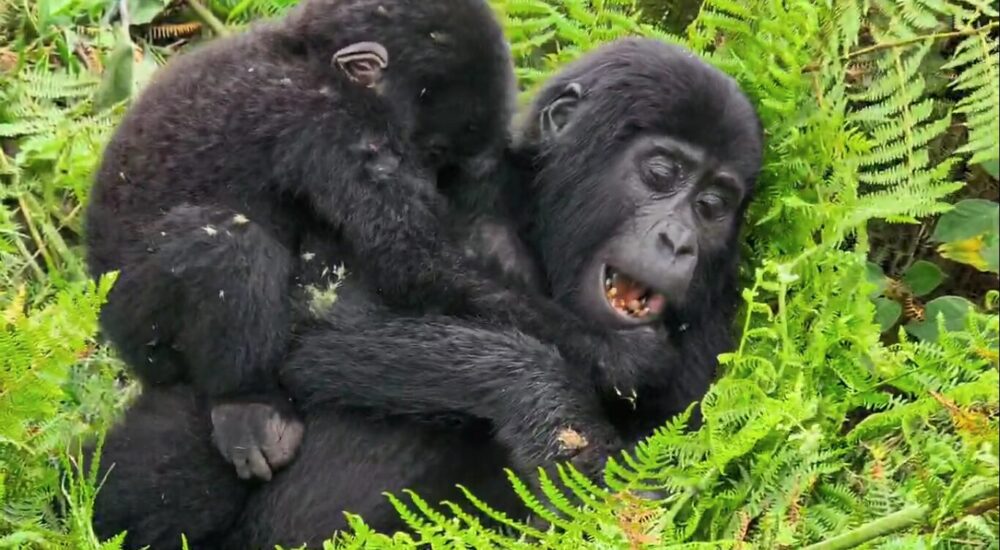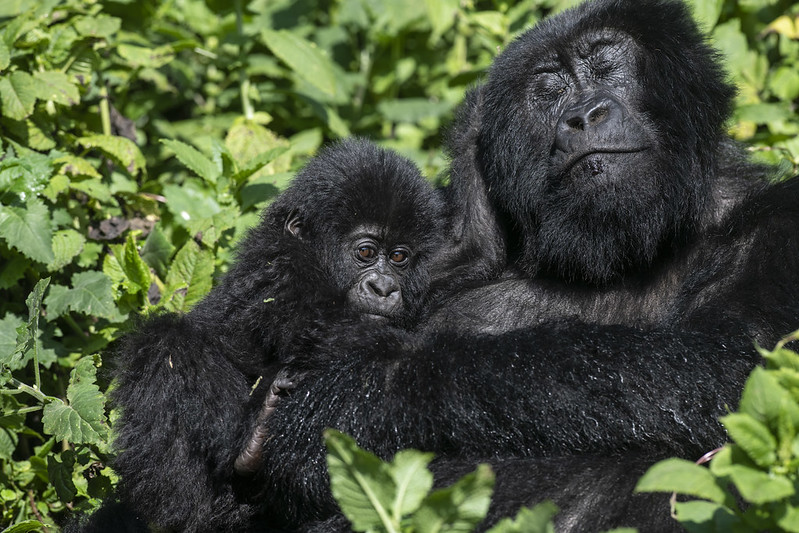Explore the importance of eco-friendly gorilla trekking and how it supports conservation and uplifts communities…
What is a Gorilla’s Worst Enemy?
What is a Gorilla’s Worst Enemy?
Gorillas, often considered the epitome of strength in the animal kingdom, are majestic, intelligent, and deeply social creatures. These magnificent apes have long captivated the human imagination, with their impressive size, expressive eyes, and complex behaviors. However, despite their strength and intelligence, gorillas face numerous challenges to their survival in the wild. While humans have traditionally regarded gorillas as an iconic species in need of protection, their true “worst enemy” comes from a combination of threats—many of which are directly or indirectly caused by human activities.
In this article, we will explore what constitutes a gorilla’s worst enemy, examining both natural and human-induced threats. From habitat loss and poaching to disease and climate change, these factors form a deadly combination that threatens the survival of gorillas, making them critically endangered. Understanding these dangers is crucial not only for protecting gorillas but also for preserving the delicate ecosystems in which they live.
1. Humans: The Primary Threat to Gorillas
While gorillas face natural predators, their most significant and dangerous enemy is humans. Humans have impacted gorilla populations in numerous ways, from habitat destruction to poaching, and the consequences have been devastating for these apes.
Habitat Destruction
One of the greatest threats to gorillas is the destruction of their natural habitats. Gorillas rely on dense, tropical rainforests for food, shelter, and social interaction. Unfortunately, human activities such as deforestation, logging, and agricultural expansion are rapidly destroying these forests. As forests are cleared for farming, mining, or infrastructure development, gorillas are pushed into smaller, fragmented areas, reducing their access to food and mates.
In addition, habitat fragmentation isolates gorilla populations, making it difficult for them to mingle with other groups. This isolation leads to genetic problems, such as inbreeding, which weakens the population’s overall health and resilience.
Poaching
Poaching is another major threat that humans pose to gorillas. Despite being protected by law in many countries, gorillas are still hunted illegally for their meat, skins, and body parts. Gorillas are often poached for bushmeat in regions where local communities are desperate for food or where the illegal wildlife trade thrives. The death of a gorilla, particularly a silverback (the dominant male in the group), can have devastating consequences for the group, as the silverback plays a vital role in the safety and stability of the family structure.
Moreover, young gorillas are sometimes captured and sold into illegal wildlife trade, either to be kept as pets or put on display in zoos. These activities undermine efforts to conserve gorilla populations, pushing them closer to extinction.
Human-Wildlife Conflict
As human populations expand and encroach on gorilla territories, conflict between the two species becomes more common. Gorillas, who typically live in dense forests, are sometimes driven into human settlements in search of food. In these areas, they can damage crops, leading to retaliation from farmers. Additionally, when humans venture too far into gorilla territories, they may unintentionally disturb the animals, causing stress and aggressive responses, especially if their young are threatened.
Such human-wildlife conflict often results in injury or death for the gorillas. In extreme cases, humans may resort to killing gorillas in defense of their property or out of fear of the animals’ potential aggression.
2. Disease: A Silent but Deadly Threat
Beyond the obvious dangers posed by habitat destruction and poaching, disease represents one of the most insidious threats to gorillas. Due to their genetic similarity to humans—approximately 98% of their DNA is identical to ours—gorillas are vulnerable to many of the same diseases that affect humans.
Respiratory Illnesses
Respiratory infections, such as the common cold and influenza, are particularly dangerous for gorillas. These diseases can spread from humans to gorillas through direct contact or via contaminated objects, such as equipment used by rangers or tourists. Because gorillas have a limited immune response to these illnesses, they are more likely to suffer from severe symptoms, including pneumonia, which can be fatal.
In many cases, the introduction of human diseases to gorilla populations has resulted in outbreaks, which can devastate entire groups. These diseases spread rapidly, and in some cases, they have killed large numbers of gorillas.
Ebola
Perhaps one of the most terrifying diseases for gorillas is Ebola, a deadly virus that has decimated gorilla populations in the past. The Ebola virus, which is transmitted by infected bodily fluids, has led to significant mortality among gorillas in central Africa. Outbreaks of Ebola in regions where gorillas live have wiped out entire family groups, leading to severe declines in population numbers.![]()
Because gorillas and humans share similar immune systems, they are particularly susceptible to zoonotic diseases, which can jump between species. The presence of diseases like Ebola further complicates conservation efforts and poses an ongoing challenge to gorilla populations.
3. Climate Change: A Growing Concern
Climate change has far-reaching effects on ecosystems worldwide, and gorillas are no exception. While gorillas are adaptable creatures, their reliance on specific forest ecosystems makes them particularly vulnerable to changes in the environment.
Disruption of Ecosystems
As climate change affects temperature, rainfall patterns, and the availability of food, gorillas face potential disruptions to their habitats. Droughts and changes in vegetation can reduce the amount of food available to gorillas, forcing them to travel further or compete more intensely for resources. Some of the plants that gorillas rely on for nutrition may become less abundant or disappear altogether, leading to malnutrition or starvation.
Increased Human Encroachment
As the effects of climate change intensify, human populations may continue to encroach on gorilla habitats in search of new resources. The displacement of communities due to changing climates can lead to further deforestation and agricultural expansion, increasing the fragmentation of the gorilla’s natural environment. Climate change, therefore, not only threatens the gorillas directly but also exacerbates the effects of other human-induced threats.
4. Natural Predators: The Lesser Threat
While gorillas are apex animals in their habitats, they do have natural predators, albeit less significant compared to the threats posed by humans. However, these predators still pose some risk to young gorillas or the elderly members of a group.
Leopards and Crocodiles
The primary predators of gorillas in the wild are leopards and crocodiles. While adult gorillas are incredibly strong and can defend themselves against these predators, juvenile gorillas or vulnerable members may fall victim to attacks. Leopards, in particular, are capable of climbing trees and are known to hunt smaller animals, including gorilla infants. Crocodiles, on the other hand, pose a threat when gorillas venture into riverbanks or other bodies of water.
Despite these natural predators, adult gorillas are highly protective of their young, and silverbacks will go to great lengths to defend their family members from threats.
5. Inbreeding: A Genetic Weakness
As gorilla populations shrink and become isolated due to habitat destruction and human encroachment, inbreeding becomes a serious concern. Inbreeding occurs when closely related individuals breed, which can lead to the expression of harmful genetic traits and reduced genetic diversity. Over time, this lack of genetic variation weakens the population, making it more vulnerable to disease outbreaks, environmental changes, and other threats.
Conservation efforts are working to prevent inbreeding by creating wildlife corridors and promoting genetic diversity, but the threat remains significant as gorilla populations continue to dwindle.
Gorillas, despite their size, intelligence, and strength, are facing an ongoing battle for survival. Their “worst enemy” is not a single entity but rather a combination of threats, many of which stem from human activities. From habitat destruction and poaching to disease outbreaks and climate change, gorillas are constantly battling against forces that threaten their existence.
The most significant enemy of gorillas is us—humans. It is our actions that have led to the destruction of their habitats, the spread of diseases, and the illegal hunting of these majestic creatures. However, through concerted conservation efforts, sustainable tourism, and increased awareness, we can help mitigate these threats and ensure a future for gorillas in the wild.
By supporting gorilla conservation programs, following ethical wildlife tourism practices, and promoting habitat protection, we can reduce the impact of human activities on gorilla populations. The survival of gorillas, and other endangered species, depends on our willingness to act as their protectors, not their adversaries.


